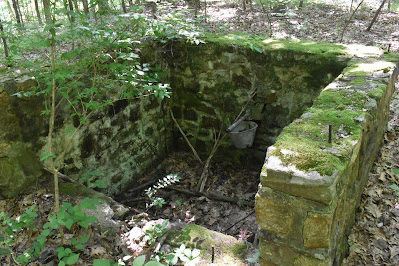It's amazing how much history there is in your own background when you take the time to look. Today I went to one of those places, the Old Huguenot Fort in Oxford, MA.
 |
| Monument On Site |
The town of Oxford was settled by the Huguenots around 1686. The Huguenots were French Protestants forced to flee France because of their religious beliefs and settled in London. They then came to Oxford to settle in Nipmuck Country.
 |
| Southwest Parapet |
They built a fort on the top of a hill. This fort had a view of the surrounding countryside and was built to hold the families that had settled there. There was a tall stockade fence with two parapets, one on the northeast corner and one opposite on the southeast corner. Inside was a large blockhouse built with thick timbers. This was used for protection from the Indians. On August 25, 1696, a party of hostile Indians went into the home of the Johnson family and brutally murdered the three children. Soon after this, the settlement was abandoned.
 |
| South Wall Looking East |
I was surprised at how big the fort was. I was expecting a smaller area. I haven't been able to ascertain if the stones that outline the fort are original. I don't think so.
.jpg) |
| Stockade Cellar Hole |
Although the area was covered with a few inches of snow, I could locate the well and the cellarhole of the main stockade.
 |
| Well |
I will return in the spring to see what else might be found at this location. There is something about walking on the ground where you know 339 years ago people lived and unfortunately lived in fear.










.JPG)
